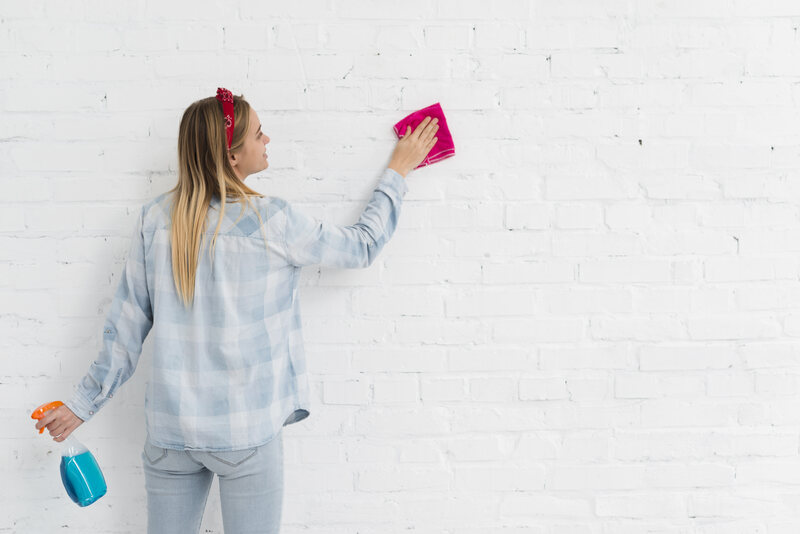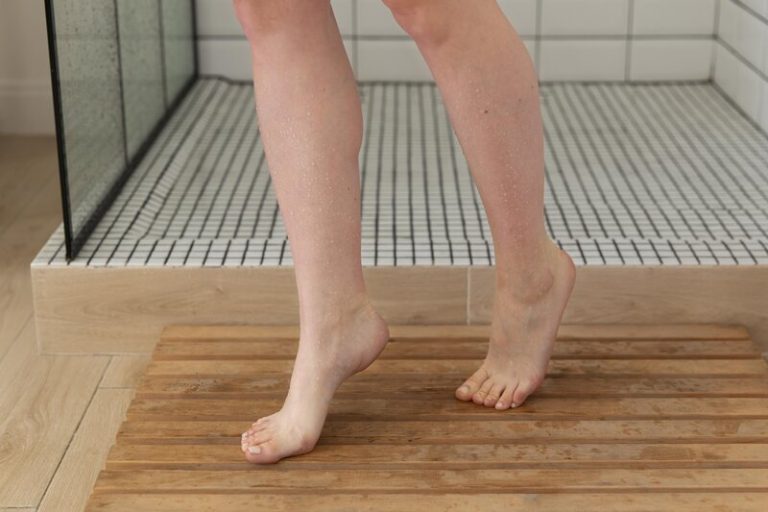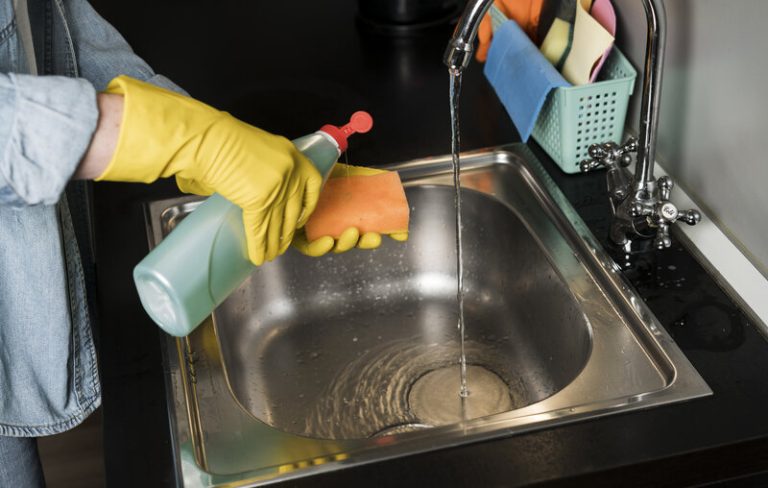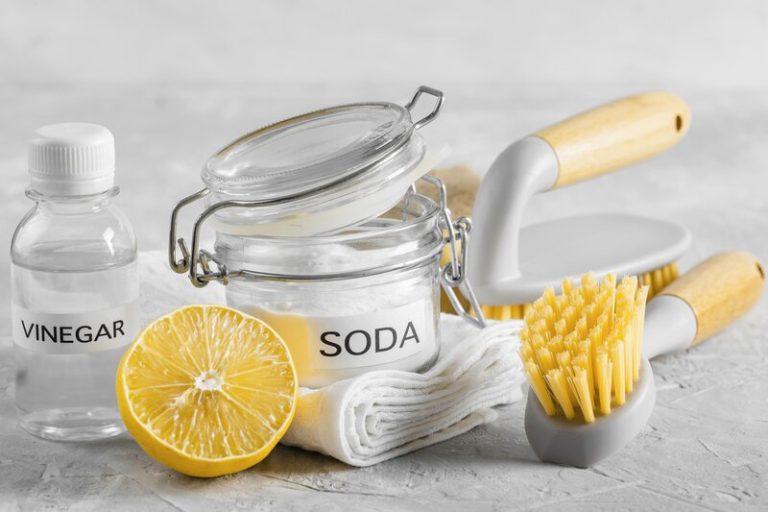Do your walls need cleaning but you’re not sure where to start? It’s time to find out how to clean walls at home.
In this comprehensive how-to clean house walls guide, we’ll cover the importance of keeping walls clean, how often you should clean them, and the tools and materials you’ll need for the job.
From preparing the room to tackling stubborn stains, we’ll give you a step-by-step guide on how to clean painted walls safely to ensure your walls look fresh and clean.
Stay tuned for expert tips on how to clean painted walls in your house and keep your walls clean for the long term.
The Importance of Cleaning Walls
Before discussing further on how to clean walls naturally, it is better if you understand the importance of this activity.
Maintaining clean walls in your home is crucial for ensuring a healthy living environment and preserving the aesthetics of your living space. Clean walls contribute to a fresh and inviting atmosphere, free from dust, allergens, and dirt build-up, which can impact indoor air quality.
Regular wall cleaning also helps to prevent the growth of mould and mildew, which can thrive in damp and dirty areas. By removing these potential health hazards, you can reduce the risk of respiratory issues and other health problems associated with poor indoor air quality.
Keeping your walls clean enhances the overall visual appeal of your home, making it more pleasant and welcoming for both residents and visitors.
How Often Should You Clean Your Walls?
The frequency of cleaning your walls depends on various factors such as the level of traffic in the area, the presence of children or pets, and the type of paint or wall finish. Generally, it is recommended to clean walls in flats more frequently due to limited ventilation and the potential for faster dirt buildup compared to houses.
For instance, high-traffic areas like corridors or kitchens may require more frequent cleaning than less-used spaces like bedrooms or home offices. In homes with children or pets, spills, smudges, and paw prints can become regular occurrences, warranting more regular wall cleaning sessions. The choice of paint finish plays a crucial role; glossier finishes are typically easier to clean than matte or flat paints.
Regular dusting and spot cleaning can help maintain the appearance of painted walls, prolonging the time between deep cleaning sessions. Factors such as indoor smoking or cooking without proper ventilation can also impact the cleanliness of walls, necessitating more frequent attention to prevent nicotine or grease buildup.
Tools and Materials Needed for Wall Cleaning
To effectively clean your walls, you will need specific tools and materials designed for wall cleaning. Some essential items include Interior Wall Wipes and Magic Eraser, which are renowned for their effectiveness in removing stains and dirt from walls. Here’s more about what to use to clean walls inside your home.
a. What Type of Cleaner Should You Use?
Selecting the right cleaner for your walls is essential to achieve the desired cleaning results without damaging the paint or surface. In terms of maintaining the beauty of your walls, using a trusted brand can make a significant difference in preserving the integrity of your paint.
Trusted brand products are usually formulated to tackle tough stains and grime while being gentle on the surface, ensuring that your walls stay vibrant and clean for a long time.
b. What Equipment Do You Need?
In addition to cleaners, specific equipment is necessary for efficient wall cleaning. Tools such as microfibre cloths, soft sponges, and extendable dusters are recommended.
These gentle tools are crucial for effectively removing dust, dirt, and grime without causing damage to the walls or compromising indoor air quality. It is important to use non-toxic cleaners and gentle tools to prevent the release of harmful particles into the air.
A step stool or ladder may be needed for reaching high areas, while a soft-bristled brush can help tackle stubborn stains without harsh scrubbing.
Preparation Before Cleaning
Before starting the wall cleaning process, it is essential to take necessary precautions to protect your furniture, floors, and belongings. Here is a further explanation of how to wash down walls for cleaning in the preparation stage that can be done.
a. How to Protect Your Furniture and Floors
Protecting your furniture and floors during wall cleaning is essential to prevent accidental damage or stains. Cover furniture with protective sheets or plastic, and use dust sheets to shield floors from any drips or spills while you clean walls.
You can use masking tape to protect edges, corners, and moulding from getting smudged with cleaning solution. It’s also advisable to check furniture for any fragile or delicate items that may require extra care, such as antiques or glass ornaments. Moving furniture away from the walls before commencing the cleaning process can provide more space to work efficiently.
b. Removing Wall Decorations and Obstacles
If you’re wondering how to clean walls at home, then one of the ways is to remove any wall hangings, artwork, or any obstructions that may hinder the cleaning process. Clearing the walls of items allows for easier access and thorough cleaning, particularly when opting for natural cleaning solutions.
Once the decorations and obstacles are cleared, you can start cleaning your walls with eco-friendly solutions such as a mixture of water and vinegar or mild dish soap.
It is essential to use gentle cleaning methods to avoid damaging the wall surface, especially if it is painted or wallpapered.
By creating a spacious and uncluttered environment in your cleaning area, you can ensure the effective removal of dust, dirt, and grime from your walls.
Step-by-Step Guide on How to Clean Walls At Home
Cleaning your walls effectively involves following a systematic approach to ensure thorough removal of dirt, grime, and stains. Here’s a step-by-step on how to deep clean painted walls that can help simplify the cleaning process, whether it’s to tackle surface dust, clean painted walls, or keep interiors pristine.
a. Dusting and Vacuuming
The initial steps in cleaning your walls involve dusting to remove loose particles and vacuuming to eliminate any cobwebs or debris. This preparatory phase sets the foundation for a thorough wall-cleaning process, ensuring a clean canvas to work on.
To maintain a pristine interior environment, it is essential to prioritise regular dusting and vacuuming. Dust particles not only accumulate on surfaces but can also make paint and wallpaper appear dull over time. By starting with these basic steps, you effectively remove the superficial dirt that can hinder deeper cleaning efforts.
Dusting ensures that you capture airborne particles and prevent them from resettling on the walls once they are cleaned. Meanwhile, vacuuming helps to get rid of hidden dirt in corners and crevices, clearing the way for a more thorough cleansing process.
b. Spot Cleaning
Spot cleaning is essential for addressing localised stains, marks, or spills on your walls. Using appropriate cleaning solutions and techniques, you can target specific areas that require attention without the need for full-wall washing, especially in flats or areas with limited wall space.
By promptly addressing stains through spot cleaning, you not only maintain the aesthetic appeal of your living space but also prevent them from becoming stubborn and harder to remove over time.
Cleaning painted walls requires gentle methods to avoid damaging the surface, such as using mild detergents or a mixture of water and vinegar for light marks. It’s crucial to test any cleaning product in a small, inconspicuous area before applying it to the entire wall to ensure compatibility with the paint.
c. Washing the Walls
Washing the walls is a crucial step in thorough cleaning to remove accumulated dirt, grease, or grime. Utilise appropriate cleaning solutions and tools to scrub the walls systematically, ensuring comprehensive coverage and effective removal of stains for a refreshed and clean finish.
When undertaking the task of wall cleaning, bear in mind that using eco-friendly cleaners is not only beneficial for the environment but also safer for your indoor air quality. Opt for mild yet potent ingredients like vinegar, bicarbonate of soda, or gentle washing-up liquid mixed with warm water to produce a natural cleaning solution.
These alternatives are not only cost-effective but also guarantee that no strong chemicals are left behind on your newly cleaned walls. Always remember to rinse the walls with fresh water after cleaning to prevent any residue buildup that could attract more dust and dirt.
Dealing with Stubborn Stains
Stubborn stains on walls can pose a challenge during cleaning, requiring targeted solutions for effective removal. If you’re looking for how to clean walls in apartments and homes with stubborn stains, here’s a complete breakdown.
a. Grease and Oil Stains
Grease and oil stains on walls can be challenging to remove without proper cleaning techniques and solutions. Natural methods and safe cleaning practices are essential to address these stubborn stains effectively, ensuring the wall’s surface remains undamaged during the cleaning process.
One effective method to combat grease and oil stains on walls is by creating a natural cleaning solution using ingredients like white vinegar, bicarbonate of soda, or lemon juice. These eco-friendly alternatives work wonders in breaking down the grease without harming the paint or wallpaper.
Another useful tip is to blot the stain gently instead of scrubbing vigorously, as aggressive scrubbing can damage the wall’s surface. Prioritise using soft cloths or sponges soaked in the natural cleaning solution for gentle yet effective stain removal, keeping the wall intact and looking fresh.
b. Crayon or Marker Stains
Crayon or marker stains can be common on walls, especially in households with children. Safe cleaning methods and suitable products tailored for removing such stains are essential to restore the wall’s appearance without causing damage to the paint or surface, making them ideal for flat wall cleaning as well.
When dealing with crayon or marker stains on walls, it’s important to address them promptly to prevent them from setting in further. One effective method is to use a gentle, non-abrasive cleaner specifically formulated for removing such stains. These cleaners are often child-friendly and safe to use around the home environment.
One recommended product is an all-purpose cleaner with natural ingredients that can effectively dissolve crayon marks without harming the wall’s finish. To apply the cleaner, simply dampen a soft cloth or sponge with the solution and gently rub the stained area in a circular motion.
c. Water Stains
Water stains on walls can be unsightly and challenging to remove without the right cleaning approach. Utilising natural cleaning solutions and gentle techniques can help eliminate water stains effectively while safeguarding the integrity of painted walls in houses and maintaining a clean home environment.
One effective natural cleaning solution for tackling water stains on walls is a mixture of white vinegar and water. The acidic properties of vinegar help break down the stains without causing harm to the paint. Simply dilute the vinegar with water in a spray bottle and apply it to the affected area. Let it sit for a few minutes before gently scrubbing it with a soft sponge or cloth.
Another eco-friendly option is using baking soda paste. Mix baking soda with a small amount of water to create a thick paste. Apply the paste to the stain, gently scrub, and then wipe clean with a damp cloth.
Tips for Maintaining Clean Walls
Now that you know how to clean walls at home, it’s a good idea to understand some tips for maintaining wall cleanliness. Basically, to keep your walls clean and extend the interval between deep cleaning sessions, implementing simple maintenance practices is key.
Regular dusting, prompt spot cleaning, and strategic placement of furniture can help preserve the cleanliness and appearance of walls, whether in flats or houses.
In terms of maintaining the cleanliness of your walls naturally, implementing eco-friendly cleaning solutions can be highly beneficial. Opting for gentle cleaners made from vinegar, baking soda, or lemon can effectively remove stains and dirt without harsh chemicals that could potentially damage the surface.
Allowing proper ventilation in rooms can prevent mould and mildew growth, which often contribute to unsightly marks on walls. Keeping indoor plants can also aid in purifying the air and maintaining a fresh ambience, indirectly contributing to cleaner walls.
There you have it, a complete explanation of how to clean walls at home. In summary, implementing effective wall cleaning practices not only helps combat the build-up of dust, dirt, and grime but also plays an important role in maintaining the integrity of your home’s interior surfaces.
Now, why not sit back, relax, and let TEKA Cleaning take care of your house cleaning needs? Book now or give us a call at 01233 751 544. Our professional house cleaning services near you are designed to make your life easier, so you can focus on what truly matters.
With our dedicated team and meticulous attention to detail, your home will be fresh and welcoming, giving you the peace of mind you deserve. Don’t wait, reclaim your time and enjoy the benefits of a clean and healthy living environment with TEKA Cleaning!
Read also:











